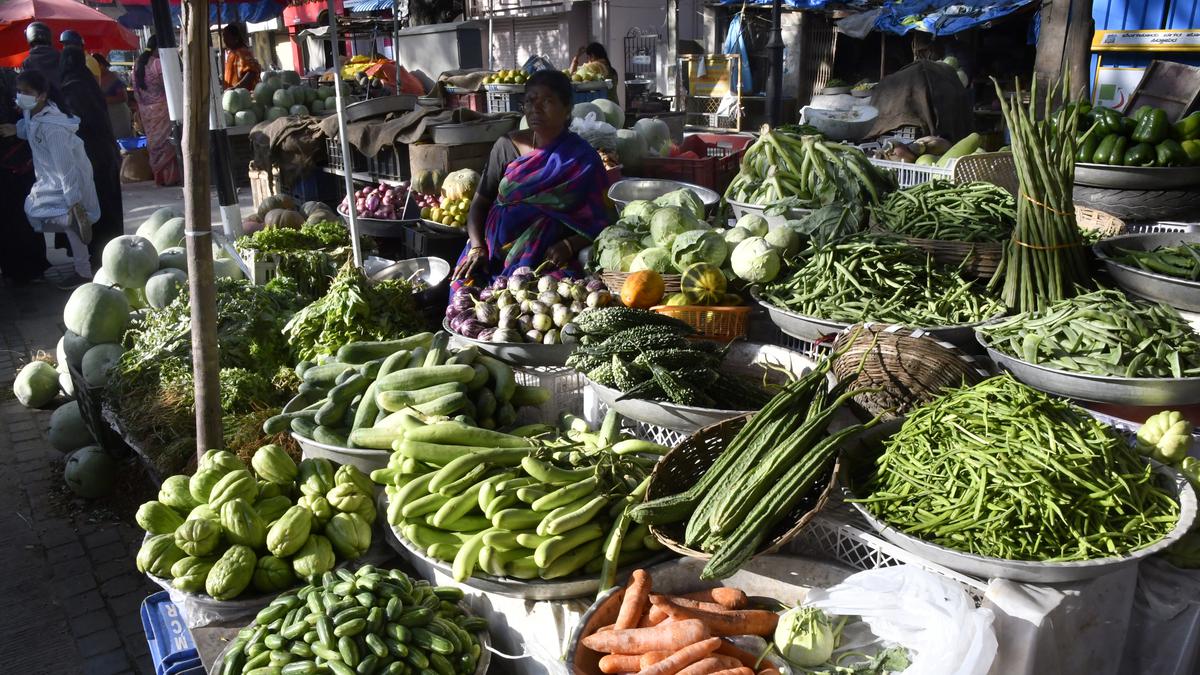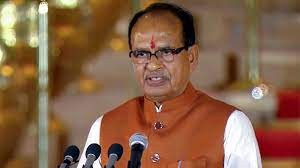Retail inflation rises to 5.55% in November

Food price inflation surging to 8.7% from 6.6% driven by a surge in the inflation rate for vegetables, pulses, fruits, and sugar.
Consumer prices rose at a three-month high pace of 5.55% in November from 4.87% in October, with food price inflation surging to 8.7% from 6.6% driven by a surge in the inflation rate for vegetables, pulses, fruits, and sugar.
While rural inflation levels were higher at 5.85% than the price rise in urban areas, which was 5.3%, food prices paid by urban consumers rose at a sharper pace of 9.3% while they were up 8.4% for their rural counterparts. On a month-on-month basis, the Consumer Price Index (CPI) was up 0.54%, with rural prices up 0.64%, and food prices rising 1.05% from October levels.
Overall consumer price inflation stood at 5.88% in November 2022, with the food price index rising 4.7%.
The Reserve Bank of India (RBI), which had warned last week of a spike in inflation in November due to hardening prices of some vegetables, expects inflation to average 5.6% between October and December. This implies that price rise may accelerate to around 6.4% in the current month.
Among food items, cereals inflation remained in double digits at 10.3% from 10.7% in October, while meat and fish inflation eased from 3.3% to 2.15% in November. There was some relief in milk inflation (down from 6.44% to 5.75%) and egg prices, which grew 5.9% compared to 9.3% in October, but other food items offset these moderations.
The price surge in pulses hardened to 20.23% from 18.8% in October, vegetables inflation hit 17.7% from just 2.7% in the previous month, and fruit prices were up almost 11% in November from 9.3% a month earlier.
Sugar and confectionary prices also accelerated faster at 6.55%, while Spices inflation eased fractionally from 22.8% to 21.6%. Edible oil prices dropped 15% from last year’s levels, compared to a 13.7% deflation in October.
Most non-food prices rose at a milder pace than October, including clothing and footwear (up 3.9%), education (5.01%), healthcare (5.51%), household goods and services (3.56%), and housing (3.55%).
Fuel and light prices were 0.77% below last year’s levels, compared to a 0.4% decline in October. Transport and Communication prices rose 2.1%, hardening slightly from October, while inflation in personal care and effects remained almost unchanged at 7.83% in November.
hi Bazaar in Bengaluru. File | Photo Credit: K. Bhagya Prakash
Consumer prices rose at a three-month high pace of 5.55% in November from 4.87% in October, with food price inflation surging to 8.7% from 6.6% driven by a surge in the inflation rate for vegetables, pulses, fruits, and sugar.
While rural inflation levels were higher at 5.85% than the price rise in urban areas, which was 5.3%, food prices paid by urban consumers rose at a sharper pace of 9.3% while they were up 8.4% for their rural counterparts. On a month-on-month basis, the Consumer Price Index (CPI) was up 0.54%, with rural prices up 0.64%, and food prices rising 1.05% from October levels.
Overall consumer price inflation stood at 5.88% in November 2022, with the food price index rising 4.7%.
The Reserve Bank of India (RBI), which had warned last week of a spike in inflation in November due to hardening prices of some vegetables, expects inflation to average 5.6% between October and December. This implies that price rise may accelerate to around 6.4% in the current month.
Among food items, cereals inflation remained in double digits at 10.3% from 10.7% in October, while meat and fish inflation eased from 3.3% to 2.15% in November. There was some relief in milk inflation (down from 6.44% to 5.75%) and egg prices, which grew 5.9% compared to 9.3% in October, but other food items offset these moderations.
The price surge in pulses hardened to 20.23% from 18.8% in October, vegetables inflation hit 17.7% from just 2.7% in the previous month, and fruit prices were up almost 11% in November from 9.3% a month earlier.
Sugar and confectionary prices also accelerated faster at 6.55%, while Spices inflation eased fractionally from 22.8% to 21.6%. Edible oil prices dropped 15% from last year’s levels, compared to a 13.7% deflation in October.
Most non-food prices rose at a milder pace than October, including clothing and footwear (up 3.9%), education (5.01%), healthcare (5.51%), household goods and services (3.56%), and housing (3.55%).
Fuel and light prices were 0.77% below last year’s levels, compared to a 0.4% decline in October. Transport and Communication prices rose 2.1%, hardening slightly from October, while inflation in personal care and effects remained almost unchanged at 7.83% in November.
Among the 22 major States that the National Statistical Office computes inflation rates for, Odisha recorded the highest inflation at 7.65% in November, followed by Rajasthan at 7%, and Haryana with 6.8%.
Delhi, with 3.1% inflation, had the mildest uptick in prices, along with Chhatisgarh (3.56%) and the erstwhile State of Jammu and Kashmir (3.8%).
The inflation rate was above the central bank’s tolerance threshold of 6% in 8 States, including Gujarat, Bihar, Punjab, Karnataka and Telangana. Uttar Pradesh, with a 5.56% inflation, was the only other major State to witness higher inflation than the national average of 5.55%.
“Food inflation continues to be a challenge with the basket of high inflation products widening: fruits, vegetables, cereals, pulses, and spices. There are clearly supply issues here and given the lower level of kharif output, will exert pressure on inflation,” said Bank of Baroda chief economist Madan Sabnavis.
ICRA chief economist Aditi Nayar pointed out that cereals and spices had now persisted in double-digit inflation for the 15th and 18th consecutive months, respectively, while pulses prices were seeing the same for the sixth straight month. While the lag in cumulative Rabi sowing as well as reservoir storage levels do not augur well for food prices, the impact of El Nino on moisture levels pose a concern too and may hurt yields in Rabi crops like wheat. The silver lining, she said, was that core inflation (excluding food and energy prices), had eased to 4.2% in November, the lowest so far in the post-pandemic period.
Source Link :- https://www.thehindu.com/business/Economy/retail-inflation-rises-to-555-in-november/article67630660.ece














